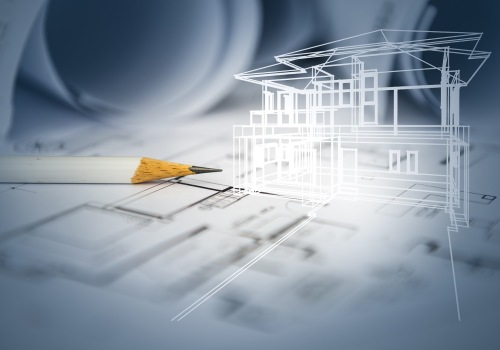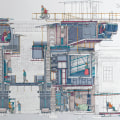Structural design is important in civil engineering because it helps to verify that the structure is safe. Structural design provides all the vital information about foundations, floors, walls, beams, types of roofs and the quality of materials to ensure that any of the structures built meets all safety requirements. Structural design provides all the crucial information about foundations, walls, floors, types of roofs, steep beams, material quality, and more to ensure that the structure is built to be safe and sound. It is essential that civil engineers work with the aesthetics of design and build structures that can withstand their loads and pressures without causing any mishaps.
In fact, building a structure without considering its structural design always runs the high risk of collapsing under its own weight or due to environmental pressures. Structural design is, therefore, crucial for construction projects, since it directly affects the safety and durability of structures. Why is a robust structural design important and is it considered the backbone of any construction project? Structural design is a subdiscipline of civil engineering and is also known as the “muscles and bones” of construction. Structural design is systematic research that determines the most cost-effective specification for a structure or structural component to safely withstand the expected load.
In other words, the determination of the cross-sectional dimension, the grade of the material, the amount of reinforcement, and other factors needed to withstand internal forces are determined through structural analysis. Structural designs are also combined with those of other planners, such as architects and construction services engineers, and they often oversee the on-site construction of projects by contractors. They can also participate in the planning and design of industrial equipment, hospital instruments and cars where structural integrity has an impact on functionality and safety. Structural design is used to design public facilities, homes, towers, tunnels, bridges and other forms of structures, and plays an important role in construction projects.
To ensure the protection, stability and durability of the structure, structural design analysis must be performed with extreme caution. Civil and structural engineers can use structural analysis to determine the forces that can operate on a structure and select materials and reinforcements that effectively withstand those forces. Civil engineering is considered to be the second oldest engineering discipline, and military engineering is considered to be the oldest. Civil engineering is a professional discipline that deals with the design, construction and maintenance of the built environment physically and naturally, especially public sector works, such as roads, bridges, dams, highways, airports, pipes, sewerage and drainage systems, railroads, ports and everything else.
The professional discipline of civil engineering offers many opportunities for specialization. Coastal engineers specialize in building coastal structures such as ports, docks and storm surge barriers that protect populated areas from flooding and erosion. Environmental engineers specialize in the design and construction of structures and facilities that treat chemical, biological, or thermal waste. Structural design is a highly specialized area of civil engineering.
It can be described as a set of methods or tools used to determine the safe and economical specifications of a structure and to ensure that a planned structure is strong enough to withstand the expected load. Structural engineers perform structural analysis to determine what internal and external forces might affect the structure and then design a structure with the right materials and reinforcements to meet the requirements. Civil engineers who design structures for construction projects must be excellent problem solvers. The decisions that structural engineers make during the structural design phase of the project will affect everything from the cost and duration of the project to the final safety and viability of the structure.
Civil engineering that designs a subway platform should ensure that the platform does not collapse under the weight of thousands of passengers. A structural engineer designing a rail system must use materials that are not damaged when a 50,000 pound wagon is used on the tracks. For a structure to remain stationary, the sum of the forces acting on it must always equal zero. However, civil engineers know that external forces will be applied to the structure throughout its operation.
These can include live loads, such as building occupants and furniture, or environmental loads, such as wind, snow, and earthquakes. In any case, an effective structural design requires civil engineers to ensure that a building can absorb external force applications while maintaining its own balance. Just as a tree branch that doesn't bend breaks in the wind, a structure that can't absorb external forces is vulnerable to damage and instability. Structural design plays an important role in construction projects.
The structural design is carried out by a structural engineer whose function is to ensure the safety, stability and performance of the structure. Civil engineers use structural analysis to assess the forces that could act on a structure and to choose materials and reinforcements that effectively withstand those forces. The specifications will detail the materials, principles, procedures, etc. necessary to complete the works.
The construction plans offer a graphic representation, indicating the course of action of the pieces, the details, the measurements, etc. From time to time they may contain part of the information set out in detail, but we should avoid doing so, if possible, by referring to the determinations rather than duplicating the information. When there is a hybrid, care must be taken to ensure proper coordination so that there is no disorder. If there is any difference between the two, the details will generally overshadow the drawings.
Structural engineers check internal and external forces, including fractures, materials used, earthquakes, vibrations, creep, structural fatigue, temperature, wind, and dynamics. They also describe in advance the possible warning signs of a prestressed and post-stressed structural collapse. Structural engineers establish structural serviceability requirements well in advance. This helps to plan, design and build the structure with a view to ensuring the continued safety of workers, visitors, customers and long-term users of the structure, avoiding potential hazards.
Structural design is that part of engineering in which structural engineers create “bones and muscles” that create the shape and form of a man-made structure. It is a highly specialized area of civil engineering. Structural design is important, since structures are intended for human habitat and related uses for different human activities, with structural safety not only for its own sake, but also for the safety of human life, since everything depends on the suitability of the structure. Since these structural details require the skills of a licensed professional engineer, municipal officials will require that structural drawings be stamped and signed by a PE (professional engineer).
The detailed structural design includes determining the strength and stability of the structure to be constructed based on the physical requirements of the building. The general notes are part of the structural drawings and cover the codes used in the design and statutes of the building. A structural drawing, a type of engineering drawing, is a plan or set of plans and details of how a building or other structure will be constructed. Usually, this “plan” is a set of structural details that are added to architectural plans or to a structural drawing.
They are now capable of performing complex structural analyses relatively quickly, but they require highly qualified structural engineers to operate them effectively. Architectural plans are a complete set of technical drawings that can be purchased through an architect, some builders, or sometimes online. If you've ever tried to build a rock tower on the beach, you may have encountered the important structural principle that the elements of a structure must remain stationary to ensure its stability. The use of complex designs and composite materials in modern structures requires effective structural analysis.
The following points demonstrate the importance of following structural engineering principles when building structures and foundations. Structural engineers can use a little creativity to design a structure with visual appeal, but they must also ensure that the structure is safe and stable for its intended use. Therefore, the process for determining the safe, durable, and economical specifications of the structure, including the materials, technology, geometry, and size of structural elements sufficient to withstand structural loads over the life period of the structure, is known as structural design. IndiaCadworks worked on carpentry drawings for an Australian owner, which included detailed drawings for common bathrooms, master bedroom bathroom, downstairs bathroom, home office, theater and TV on the ground floor.
Structural engineering plays a key role in the design of both the individual elements and the structure as a whole. .










